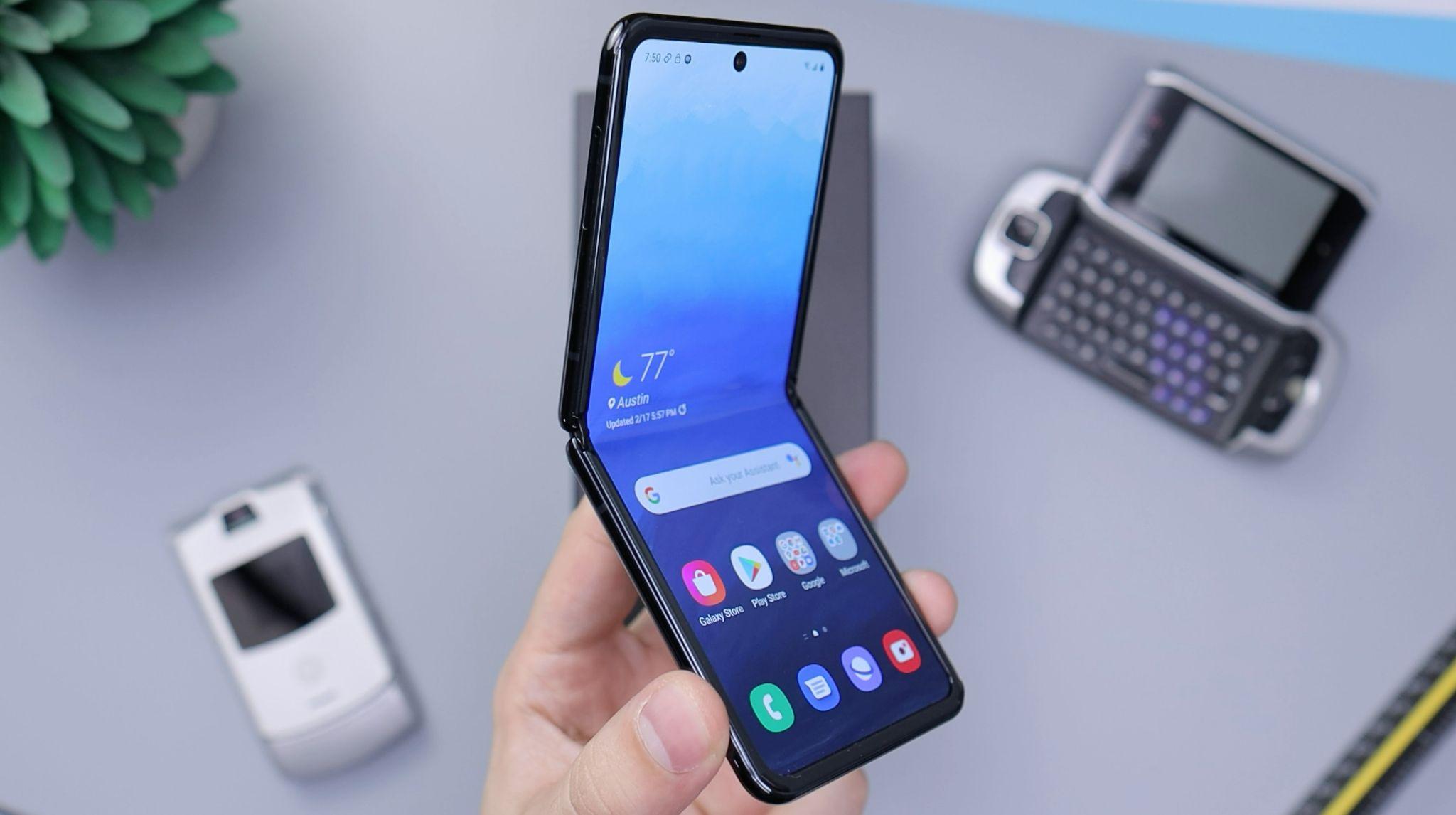The Rise of Foldable Phones: Pros and Cons

The smartphone industry has witnessed a revolutionary shift with the introduction of foldable phones. These innovative devices combine the portability of a smartphone with the expansive screen real estate of a tablet, offering users a unique and versatile mobile experience. As technology advances, foldable phones are gaining traction among consumers and tech enthusiasts alike, prompting a closer examination of their benefits and drawbacks.
The Evolution of Foldable Phones
The journey of foldable phones from concept to reality has been marked by significant technological breakthroughs and persistent innovation. Major tech companies have invested heavily in research and development to bring these futuristic devices to market.
| Year | Milestone |
|---|---|
| 2011 | Samsung demonstrates first foldable AMOLED display prototype |
| 2018 | Royole FlexPai becomes the first commercially available foldable phone |
| 2019 | Samsung releases Galaxy Fold, facing initial durability issues |
| 2020 | Motorola revives the Razr brand with a foldable design |
| 2021 | Samsung introduces water-resistant foldable phones |
| 2022 | Google announces Android 12L, optimized for foldable devices |
Early Development
The concept of foldable phones emerged from the desire to create larger displays without sacrificing portability. Early prototypes faced numerous challenges:
- Display Technology: Developing flexible screens that could withstand repeated folding.
- Hinge Mechanisms: Creating durable hinges that allow smooth folding without damaging the display.
- Battery Life: Optimizing power consumption for larger, more complex screens.
- Software Adaptation: Modifying operating systems to accommodate changing screen sizes and orientations.
Market Entry
The first commercially available foldable phones were met with a mix of excitement and skepticism. Early adopters praised the innovative design but highlighted several issues:
- Durability Concerns: Reports of screen damage and hinge problems.
- High Price Points: Initial models were significantly more expensive than traditional smartphones.
- Software Limitations: Many apps were not optimized for foldable displays.
Despite these challenges, the market for foldable phones has continued to grow, with manufacturers refining their designs and addressing early criticisms.
Advantages of Foldable Phones

Foldable phones offer several compelling benefits that set them apart from traditional smartphones:
- Larger display in a compact form factor
- Enhanced multitasking capabilities
- Improved video watching and gaming experiences
- Versatility for both professional and personal use
- Cutting-edge design appeal
Enhanced Display Size
The primary advantage of foldable phones is their ability to provide a tablet-sized display in a device that can still fit in a pocket. This larger screen offers:
- Immersive Media Consumption: Watching videos, reading e-books, and browsing photos becomes more enjoyable on a larger display.
- Productivity Boost: Editing documents, managing spreadsheets, and writing emails is more comfortable with the extra screen space.
- Enhanced Gaming: Mobile games benefit from the larger display, providing a more immersive experience.
Multitasking Capabilities
Foldable phones excel in multitasking scenarios, allowing users to:
- Run multiple apps side-by-side
- Drag and drop content between applications
- Use one half of the screen as a keyboard while viewing content on the other half
- Participate in video calls while accessing other apps simultaneously
Innovative Design
The unique form factor of foldable phones appeals to tech enthusiasts and early adopters who value:
- Cutting-Edge Technology: Owning a device at the forefront of mobile innovation.
- Conversation Starter: The distinctive design attracts attention and sparks discussions.
- Futuristic Aesthetic: Foldable phones embody a sci-fi-like vision of technology.
Disadvantages of Foldable Phones
Despite their advantages, foldable phones come with several drawbacks that potential buyers should consider:
- Higher cost compared to traditional smartphones
- Durability concerns, especially with the folding mechanism
- Thicker profile when folded
- Limited water and dust resistance (in some models)
- Potential software compatibility issues
Durability Concerns
The complex mechanisms of foldable phones introduce new durability challenges:
- Screen Vulnerability: The flexible display may be more prone to scratches and damage.
- Hinge Wear: Repeated folding can stress the hinge mechanism over time.
- Crease Formation: Many foldable phones develop a visible crease along the fold line.
Manufacturers are actively working to address these issues, with each generation showing improvements in durability and longevity.
High Cost
Foldable phones command a significant price premium over traditional smartphones:
| Phone Model | Price (USD) | Comparable Traditional Phone | Price (USD) |
|---|---|---|---|
| Samsung Galaxy Z Fold3 | $1,799 | Samsung Galaxy S21 Ultra | $1,199 |
| Huawei Mate X2 | $2,784 | Huawei P40 Pro+ | $1,449 |
| Motorola Razr 5G | $1,399 | Motorola Edge+ | $999 |
The high cost is attributed to the complex manufacturing process, innovative materials, and cutting-edge technology required for foldable displays.
Software Optimization
While progress has been made, software optimization remains a challenge for foldable phones:
- Some apps may not fully utilize the expanded screen space
- Transitions between folded and unfolded states can be jarring in certain applications
- User interfaces may not always adapt seamlessly to different screen configurations
Popular Foldable Phone Models

Several manufacturers have entered the foldable phone market, each with their unique approach to design and functionality.
| Model | Screen Size | Processor | RAM | Storage | Battery |
|---|---|---|---|---|---|
| Samsung Galaxy Z Fold3 | 7.6″ unfolded, 6.2″ cover | Snapdragon 888 | 12GB | 256GB/512GB | 4400mAh |
| Huawei Mate X2 | 8″ unfolded, 6.45″ cover | Kirin 9000 | 8GB | 256GB/512GB | 4500mAh |
| Motorola Razr 5G | 6.2″ unfolded, 2.7″ cover | Snapdragon 765G | 8GB | 256GB | 2800mAh |
Samsung Galaxy Z Fold Series
Samsung’s Galaxy Z Fold series has been at the forefront of foldable phone innovation:
- Pros: S Pen support, water resistance, robust app ecosystem
- Cons: High price, visible crease, bulky when folded
User reviews praise the multitasking capabilities and large inner display, while some criticize the weight and thickness when folded.
Huawei Mate X Series
Huawei’s Mate X series takes a different approach with an outward-folding design:
- Pros: Large uninterrupted display, powerful camera system
- Cons: Limited global availability, lack of Google services
Experts commend the sleek design and impressive hardware but note the software limitations due to U.S. restrictions.
Motorola Razr Series
Motorola revived its iconic Razr brand with a foldable clamshell design:
- Pros: Compact size, nostalgic appeal, useful external display
- Cons: Lower specs compared to competitors, smaller battery
Users appreciate the pocketable form factor and innovative hinge mechanism but express concerns about long-term durability and battery life.
Future of Foldable Phones
The foldable phone market is poised for significant growth and innovation in the coming years:
Advancements in Display Technology
Future developments may include:
- More Durable Materials: Stronger, more flexible display materials to reduce creasing and improve longevity.
- Enhanced Hinge Mechanisms: More robust and dust-resistant hinge designs.
- Improved Folding Radius: Ability to fold displays with a tighter radius, enabling slimmer devices.
Broader Market Adoption
As technology matures, we can expect:
- Price Reductions: Economies of scale and manufacturing improvements will likely drive down costs.
- Increased Competition: More manufacturers entering the market, leading to greater innovation and choice.
- Mainstream Integration: Foldable technology potentially becoming a standard feature in flagship devices.
The future of foldable phones looks promising, with potential applications extending beyond smartphones to laptops, tablets, and wearable devices.
In conclusion, foldable phones represent a significant leap in mobile technology, offering unique advantages in display size and multitasking capabilities. However, they also come with notable drawbacks in terms of cost and durability. As the technology continues to evolve, addressing these challenges will be crucial for wider adoption. Consumers must weigh the pros and cons carefully, considering their personal needs and preferences when deciding whether to invest in a foldable phone. With ongoing innovation and refinement, foldable phones are poised to play an increasingly important role in the future of mobile computing.





